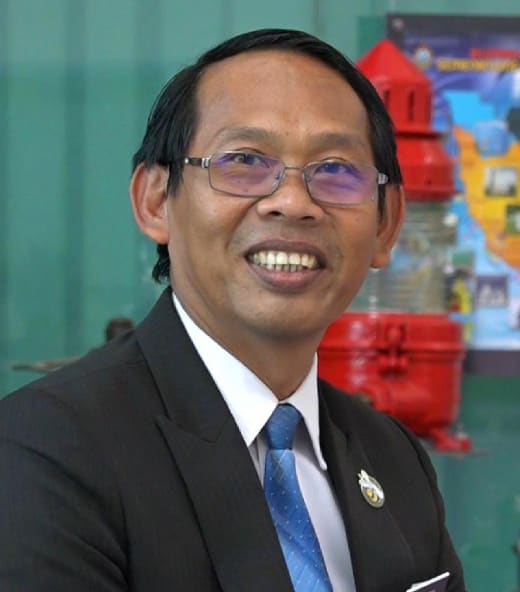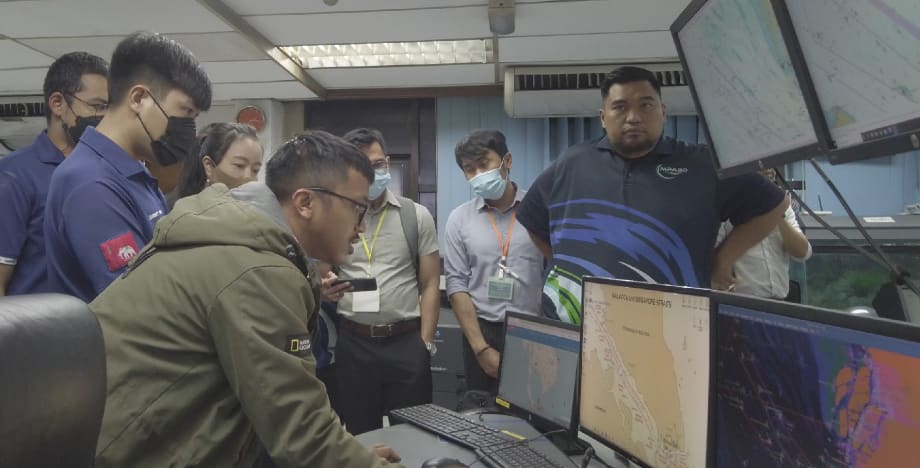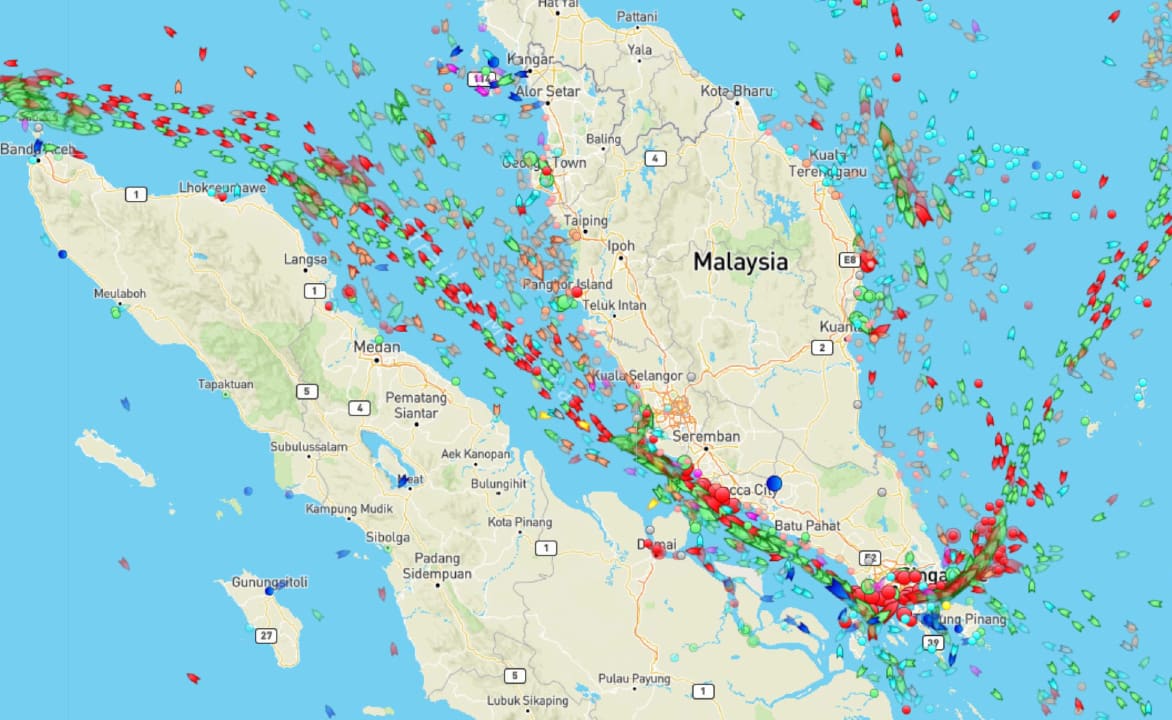Buttressing Cybersecurity
An ASEAN-Japan initiative in Bangkok is buttressing cybersecurity in Southeast Asia and worldwide. The ASEAN-Japan Cybersecurity Capacity Building Center (AJCCBC), which operates under Thailand’s National Cyber Security Agency, cultivates cybersecurity human resources for ASEAN members. Funding the initiative initially was Japan-ASEAN Integration Fund 2.0. As of 2023, JICA has assumed the funding responsibility and has begun dispatching experts and engaging trainers. Japan’s NEC Corporation also participates in this initiative. It developed the cybersecurity curricula for regular training sessions at the AJCCBC and conducts some of the training there through its subsidiary NEC Corporation (Thailand).
“Cyberthreats are global,” cautions NEC Corporation (Thailand) president Kurihara Ichiro, “and cybersecurity therefore needs to be global, too. Companies are highly integrated in their operations, and an unlocked door anywhere in a company’s global organization exposes the entire organization to cyberattacks.”
The ASEAN members are increasingly important links in the global supply chains of a global cast of corporations. Ensuring cybersecurity is therefore crucial to maintaining an appealing investment climate in Southeast Asia.
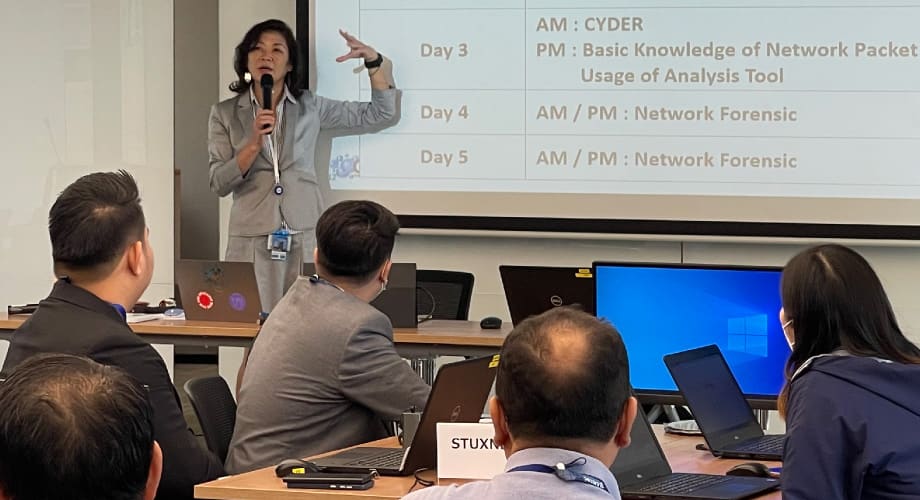
Cybersecurity training session in progress
“Indirect,” sighs Kurihara. “Everyone knows that cyberattacks can originate anywhere, but we also need to be alert to the reality that they can come through any nation. Hackers in nation X might target a system in nation Y, but they might route their attack through nation Z. We strive to impart to the cybersecurity trainees a global perspective on the challenges they face, as well as the skills needed to address those challenges. Our task is to ensure that cyberattacks don’t afflict systems in the ASEAN members and that they don’t pass through systems here en route to systems in other regions.”
The cybersecurity training at the AJCCBC is for personnel responsible for cybersecurity at government agencies and at private-sector companies. It includes sessions devoted to network forensics, to malware analysis, and to exercises in responding to simulated cyberattacks. Complementing the sessions for training cybersecurity experts are sessions for training trainers. Each session spans 2.5 days and accommodates 20-some trainees.
Learning by doing
In the network forensics sessions, the trainees learn about such matters as how hackers attack servers in protective perimeter networks and how they infiltrate clients’ computers. The trainees conduct log analyses and deep packet analyses and write signature code for detecting intrusions. In the malware analysis sessions, the trainees learn how to identify malware’s function and how to anticipate its behavior and likely effect. And in the cyberdefense exercises, the participants master the rudiments of countering diverse cyberthreats. “The training provides comprehensive grounding,” lauds a former trainee, “that prepares IT personnel managers to cope with incidents [of cyberattacks].”
Prospective trainees are of diverse backgrounds and of high skill levels, and they undergo preliminary testing to allow for optimizing their grouping in training sessions. The AJCCBC holds more than six training courses a year, including sessions based on needs determined through regional surveys, and provides housing for the trainees during their stays in Bangkok.
An interesting adjunct to the training courses is the annual Cyber SEA Game competition. That event is a two-day, capture-the-flag competition for under-30 cybersecurity professionals and amateurs from the ASEAN members. Four-person teams vie to outdo one another in dispatching simulated cyberthreats poised by the organizers. The winning team earns a trip to Japan to receive training and to observe the SECCON CTF International Finals. Sponsoring the finals are several Japanese corporations, including NEC.
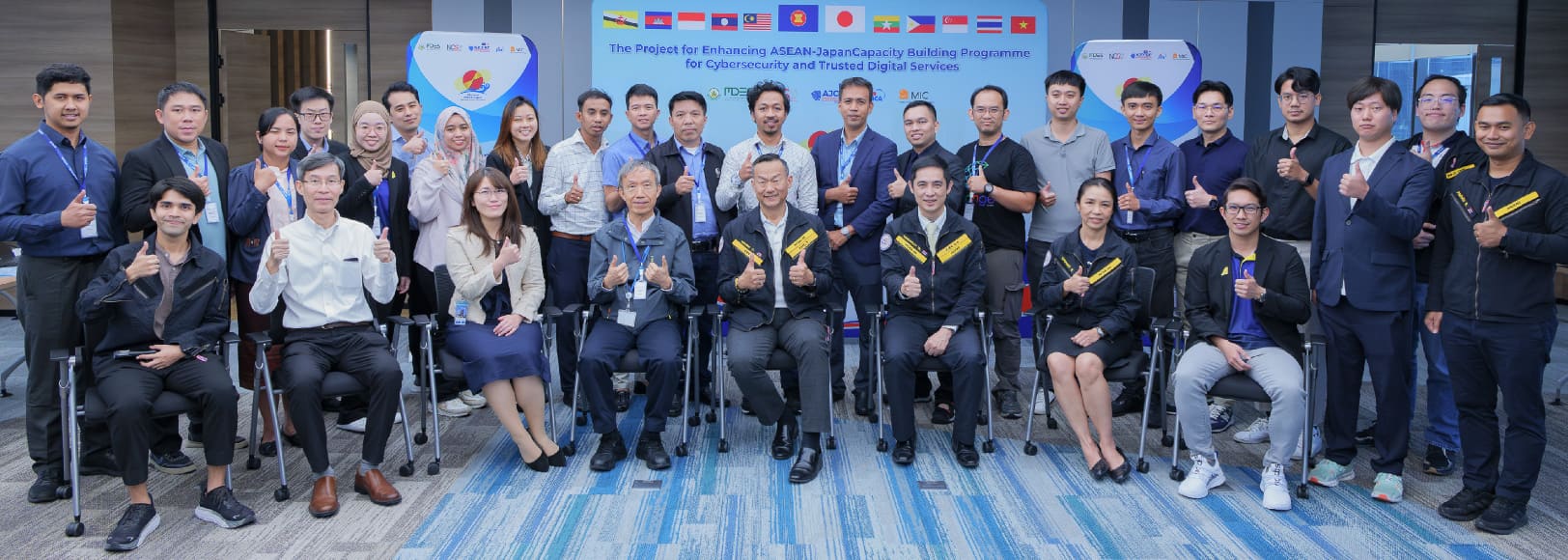
Closing ceremony for training session






